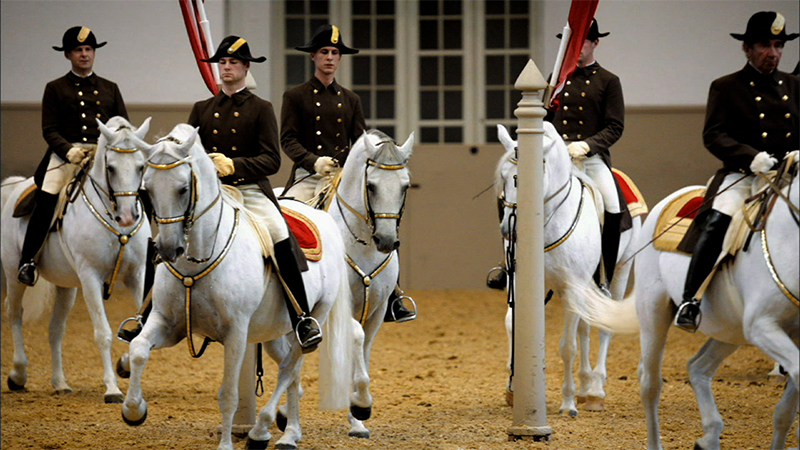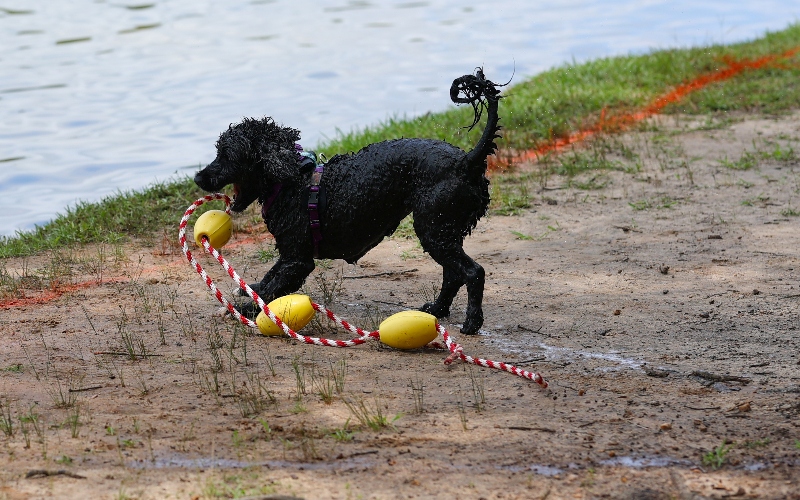Dressage the ballet of the equine world
Published 11:00 pm Wednesday, January 31, 2018

- The famous white Lipizzan Stallions are the most familiar image of dressage for many people. While their beautifully executed dressage performances and “airs above the ground” have mesmerized audiences for centuries, the airs above the ground gymnastics are no longer seen in modern day dressage competitions.
This is the second in a series of articles detailing the types of competition featured at the World Equestrian Games at the Tryon International Equestrian Center in September.
Imagine 12 snow-white stallions with riders in elegant dark coats, all in perfect unison, floating across an arena. Lights glisten on the horses’ dapples and thousands of spectators watch silently mesmerized.
With no apparent signal from the riders, the horses wheel and turn and move sideways. Soon a few break away from the group and the audience is awed into exclamations as the powerful steeds launch into the air and appear to float back to earth.
Trending
This is the pinnacle of dressage. These are the famed Lipizzan Stallions of Vienna – the horses General Patton saved during WWII. This is what many think of when they think of dressage.
While the dressage competition at the upcoming World Equestrian Games (WEG), to be held at the Tryon International Equestrian Center (TIEC) this September, will be an individual competition and will not include the “airs above the ground,” it will still mesmerize and awe audiences from around the world.
Dressage is often called the ballet of horsemanship. Its origins reach back to 500 years before Christ when the ancient Greek horseman, Xenophon, created the text, “On Horsemanship,” to help train horses and riders for the Greek cavalry. The word “dressage” is a French word with the loose translation of “training or schooling.”
The purpose of dressage is to train the horse to be supple, agile, responsive to the rider’s signals and capable of refined movement. Dressage was originally developed to help cavalry horses become more responsive to their riders in battles.
Today’s dressage rides are usually in the form of prescribed movements in a flat arena. The arena has letters marking different locations at which the horse makes a change in speed or gait (walk, trot or canter) or produces an athletic movement such as a shoulder in, trotting in place, an extension in stride or other gymnastics.
While most of today’s dressage competition does not include the airs above the ground, it does require the subtle communication, agility and elegance similar to that found in the Lipizzan stallions. There are, of course, several levels of dressage schooling and competition ranging from amateur to the Grand Prix level ridden in the World Games and the Olympics.
Trending
Aside from the fact that a dressage ride does not include jumping obstacles, one of the most noticeable differences between dressage and other forms of combined training, such as stadium jumping or cross-country, is the balance of the horse and rider. Jumping and cross-country riding require the horse to use a dynamic balance allowing its weight to shift from the forehand to the hindquarters and back, depending on the speed and the terrain the horse is traveling. The rider tends to balance forward and use what is commonly termed a “forward seat” in the saddle.
Dressage, however, uses a more central balance of both horse and rider. The horse shifts its weight from the forehand, toward the hindquarters and lightens the forehand. When the horse achieves this maximum shift of weight, it is said to be “collected.” The rider sits less forward and more upright, uses a saddle with a deeper seat and uses a longer stirrup than in jumping or cross-country.
When properly collected, the horse appears to crouch slightly on his hindquarters, thus transforming his hindquarters into a powerful spring from which it can spin or jump and take off running in any direction. Proper collection actually reproduces and lengthens the duration of this natural reaction to a threat.
Dressage helps the horse develop this ability to react quickly with agility and power, and helps build the horse’s strength, flexibility and endurance. This allows the horse to perform these gymnastics for longer periods of time while carrying a rider. A horse properly trained in dressage is not only beautiful; it is safer to ride because of its increased balance, athletic ability and responsiveness.
Dressage is also ideal for increasing communication between horse and rider. When ridden correctly, the rider uses his or her legs and seat more to signal the horse than the hands. The rider’s hands should remain soft and supple, merely containing and redirecting the energy flowing forward that is created by the rider’s legs.
In dressage competitions, judges are looking for this agility and responsiveness in the horse and softness and subtleness in the rider. Dressage tests are scored on the horse’s rhythm, relaxation, connection, impulsion, straightness and, on the higher levels, collection.
As in the Olympics, WEG horses and riders will compete at the Grand Prix level, which includes movements such as piaffe and passage, collected and extended gaits, pirouettes, half passes and halts from the passage and the collected canter.
Piaffe is a highly collected trot nearly in place. In dressage Passage refers to a collected trot that appears to be in slow motion. A pirouette is usually performed at the collected canter in which the horse’s front legs describe a circle around a smaller circle made with the hind legs.
Extended gaits are normal gaits with longer strides. The front and hind legs should move at equal angles. Though it looks flashy, recently popular excessive extension in the front legs, called “toe flicking,” is actually incorrect and unduly stresses the horse’s back and shoulders.
Collected gaits are performed in full central balance with the horse’s weight balanced toward the hindquarters. The horse’s thoracic area is somewhat elevated. In some high-level dressage tests, the rider is required to loosen the reins in order to show what is termed, “self-carriage.” Self-carriage means the horse is properly balanced and not pulling or leaning on the rider’s hands.
While it may appear to the non-rider that the horse is merely going in fancy circles, the horse is actually producing a great deal of forward energy. It takes a rider with good balance, strength, softness and fluidity to properly contain and re-direct that energy into an effective and beautiful ride.
The dressage competitions at the 2018 WEG will be Wednesday, Thursday and Friday, September 12-14 and Sunday, September 19. •
Catherine Hunter’s journalism career spans 20 years of writing for
newspapers and magazines, including The Chronicle of the Horse, The Western
Horseman, the Tryon Daily Bulletin and Foothills Magazine.
In 2000, Hunter received a South
Carolina Press Association award for reporting in depth. She is the author of “Sacred Connections Horsemanship: Empowering Horse and Rider through Chakra Energy.” Email her at catherine.hunter@tryondailybulletin.com.





